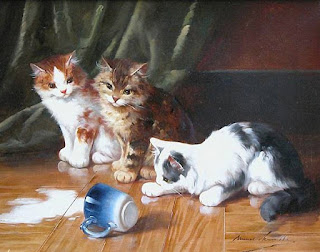Little Dancer, aged 14 Edgar Degas, French 1834-1917 This sculpture was made of bronze with fabric and had so much personality when I first came across this in the middle of the first room we arrived in at the Baltimore Museum of Art. I looked and studied it for awhile because of the confusion I found myself in. I danced for 16 years; ballet, pointe, tap, jazz, hip hop, contemporary, modern, etc. Being pretty familiar with the dance world, this little dancer was in third position, and I loved the worn out pointe shoes she had crossing up her ankles so delicately. I was really confused on her posture though to be completely honest. In ballet, a ballerina must show poise by having her stomach in, chest aligned with her buttocks which should be tucked under her waist properly. Her head was designed to make the back of her neck cringe, which is a huge red flag in dancing. So, I came to the conclusion that Edgar sculpted her in this manner to show innocence. She quite literally is a ...





